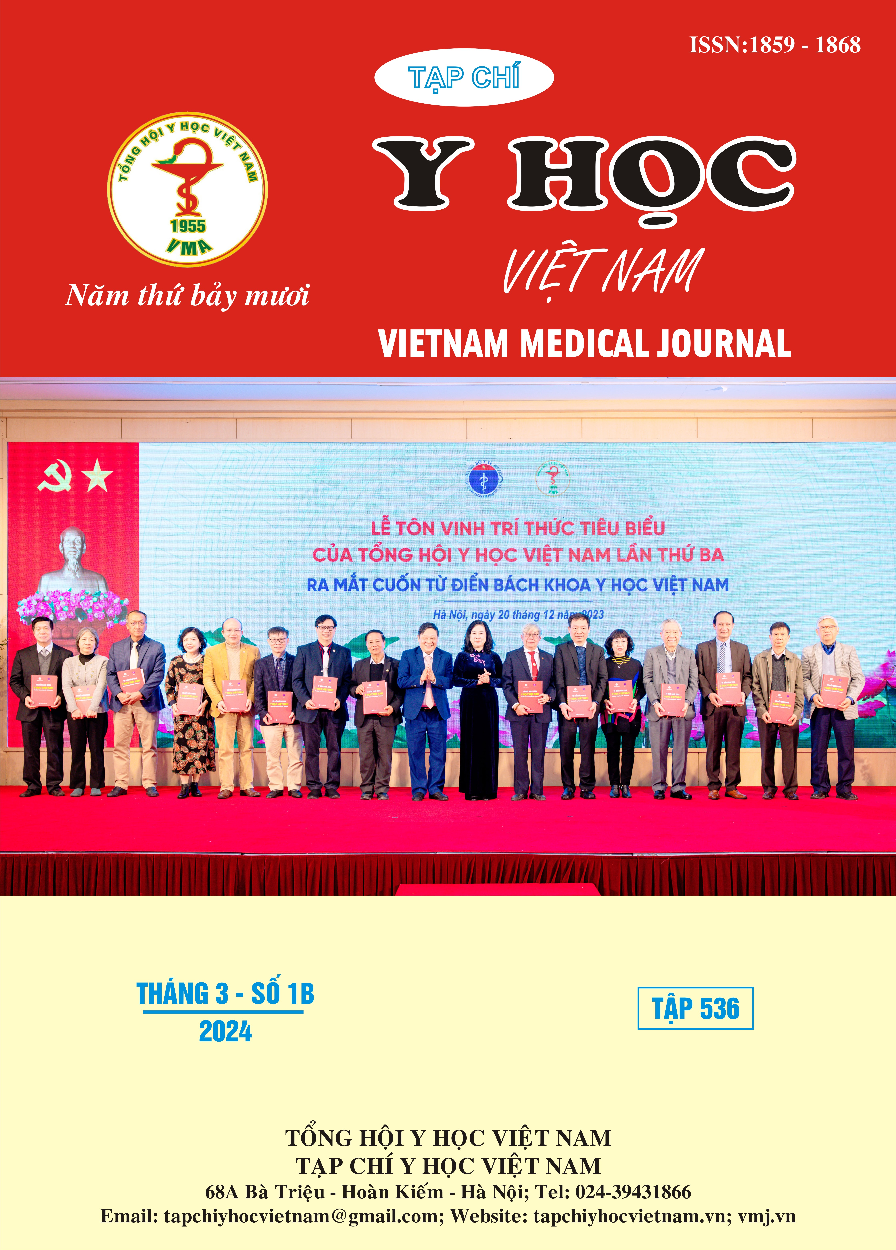STUDY ON THE RESULTS OF INTERVENTION FOR CHILDREN FROM 18 TO 36 MONTHS WITH SEVERE AUTISM SPECTRUM DISORDER AT CA MAU OBSTETRICS AND PEDIATRIC HOSPITAL
Main Article Content
Abstract
Background: Autism spectrum disorder is a type of mental development disorder characterized by impaired social functioning and restricted or repetitive behaviors, causing personal, family, and social impact and loss. community resources, especially severe autism spectrum disorder. Early intervention in cases of severe autism spectrum disorder is necessary for individual children, families and communities, helping children integrate early and reduce the burden on families and society. Objective: evaluate the results of intervention for severe autism spectrum disorder in children aged 18-36 months at Ca Mau Obstetrics and Pediatrics Hospital. Materials and methods: Non-controlled intervention study using the PECS (Picture Exchane Communication System) method, also known as the visual education method, on 20 children 18-36 months old diagnosed with severe autism spectrum disorder according to the scale. CARS score (The Childhood Autism Rating Scale) at Ca Mau Obstetrics and Pediatricss Hospital. Results: Assessing the level of autism using the CARS scale and the child's adaptive capacity using the Vineland-II scale after 3 months and 6 months of intervention, all areas of the CARS scale had a decrease in average score and median score. The average of the indicators and the overall score of the Vineland-II scale both increased; Age group, gender and place of residence are related to results after intervention (p<0.05). Conclusion and suggestion: The proportion of children 18-36 months old diagnosed with severe autism spectrum disorder improved after intervention. The degree of improvement depends on a number of factors such as gender, age and place of residence. Children with severe autism spectrum disorders need timely intervention, requiring close coordination between family, school and medical staff.
Article Details
References
2. Werling D. M., Geschwind (2013), "Sex differences in autism spectrum disorders”", Current Opinion in Neurology, 26(2), pp. 146-53.
3. Trần Thiện Thắng, "Tỷ lệ rối loạn phổ tự kỷ ở trẻ 24 - 72 tháng tuổi bằng tiêu chuẩn DSM-5", Tạp chí Nghiên cứu y học (2023)-163(2), tr.108-117.
4. Chien YL, Wu CS, Chang YC, Cheong ML, Yao TC, Tsai HJ. Associations between parental psychiatric disorders and autism spectrum disorder in the offspring. Autism Res. 2022;doi: 10.1002/aur.2835. 5.
5. Nguyễn Tấn Đức. Rối loạn phổ tự kỷ và một số yếu tố liên quan ở trẻ 24-72 tháng tuổi tại tỉnh Quảng Ngãi. Tạp chí Y Dược học. 11-2018 2018;8(6).
6. Lê Thị Kim Dung. Nghiên cứu đặc điểm dịch tễ, phương pháp chẩn đoán và can thiệp sớm rối loạn tự kỷ ở trẻ em tại cộng đồng. Đại học Thái Nguyên; 2021.
7. Trần Thiện Thắng, "Đặc điểm giao tiếp chức năng ở trẻ rối loạn phổ tự kỷ mức độ 3 theo tiêu chuẩn DSM-5", Tạp chí Nghiên cứu y học (2023)-162(1), tr.206-213.
8. Trần Văn Lý, Vũ Thị Bích Hạnh (2016), "Đánh giá kết quả mô hình can thiệp toàn diện cho trẻ tự kỷ tại Trung tâm phục hồi chức năng Thụy An-Ba Vì", Tạp chí Y học Thực hành (1002)-số 4, tr. 57-59.
9. Nguyễn Thị Hương Giang. Nghiên cứu phát hiện sớm tự kỷ bằng MCHAT 23, đặc điểm dịch tễ-lâm sàng và can thiệp sớm phục hồi chức năng cho trẻ nhỏ tự kỷ. Trường đại học Y Hà Nội; 2012.
10. Phạm Trung Kiên. Nghiên cứu tỷ lệ hiện mắc và kết quả điều trị tự kỷ trẻ em tại tỉnh Thái Nguyên. Tạp chí Y học thành phố Hồ Chí Minh. 2014;18(4)(4):74-79.


